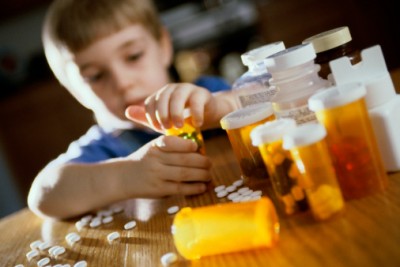
Did you know? Plastic is a very versatile material originating from various elements.
The elements of the periodic table, such as carbon, hydrogen, oxygen, nitrogen and sulfur are the basis for a variety of plastics used to make most of the products we use every day. Some plastics are transparent and tough and can be used in safety glasses or goggles.
Other plastics are strong and lightweight (such as child proof cap), allowing more products to be shipped in less packaging. Plastics can be resistant to bacteria, and can be used in packaging for food and medical equipment.
You don’t have to be a scientist to understand all the uses of plastics.
Plastics are used in various types of food packaging and containers for a variety of reasons: they help protect food and prevent damage, ensure food safety and prolong food freshness.
What are the different types of plastics used in food packaging?
You may have seen the number 1 to 7 on the bottom or side of the plastic container. This number is the plastic’s «resin identification code», also known as the «recycling number». The number also serves as a guide for consumers who want to recycle plastic containers.
Most plastic resins used in containers (#1 through #7) are recyclable. Most often, community recycling programs collect plastic bottles made of PET (#1) and HDPE (#2), but many communities are expanding their programs to collect other types of plastics.
While most communities instruct their residents to recycle based on the shape of an item (e.g., bottles, covers, child proof cap), some communities also reference the resin identification code. If you have questions about what types of plastics are recycled in your community.
- PETE or PET (recycling number 1 / resin id. code 1).
What is PETE? Polyethylene terephthalate (PETE or PET) is a lightweight semi-rigid or rigid plastic that is much more impact resistant and helps protect food or liquids inside packaging.
How is it used? PET is commonly used in food packaging such as soft drinks, sports drinks, single-serve water, ketchup, salad dressings, vitamins, vegetable oil bottles and peanut butter containers.
Is it FDA approved for food contact? Yes.
Recyclable: Yes, check with your community recycling center to be sure.
- HDPE (recycling number 2 / resin id. code 2)
What is HDPE? High Density Polyethylene (HDPE) is a hard, opaque plastic that is lightweight but strong. For example, an HDPE milk container may weigh only half a kilo, but be strong enough to hold about 3.78 liters of milk.
How is it used? HDPE is commonly used in milk and juice containers, vinegar and butter squeeze bottles and chocolate syrup containers, in addition to shopping bags.
Is it FDA approved for food contact? Yes.
Recyclable: Yes, check with your community recycling center to be sure.
- PVC (recycling number 3 / resin id. code 3)
What is it? The element chlorine is the main ingredient used to make polyvinyl chloride (PVC), a common type of biologically and chemically resistant plastic. These two characteristics help PVC containers maintain the integrity of products, including medicines (such as child proof cap).
How is it used? Clear vinyl is used as tamper-evident over-the-counter drug packaging and in the shrink-wrapping of various products. Vinyl is also used in blister packaging (packaging that has a cavity or recess), such as packaging for soft mints or chewing gum, for example.
Is it FDA approved for food contact? Yes.
Recyclable: Yes, check with your community recycling center to be sure.
